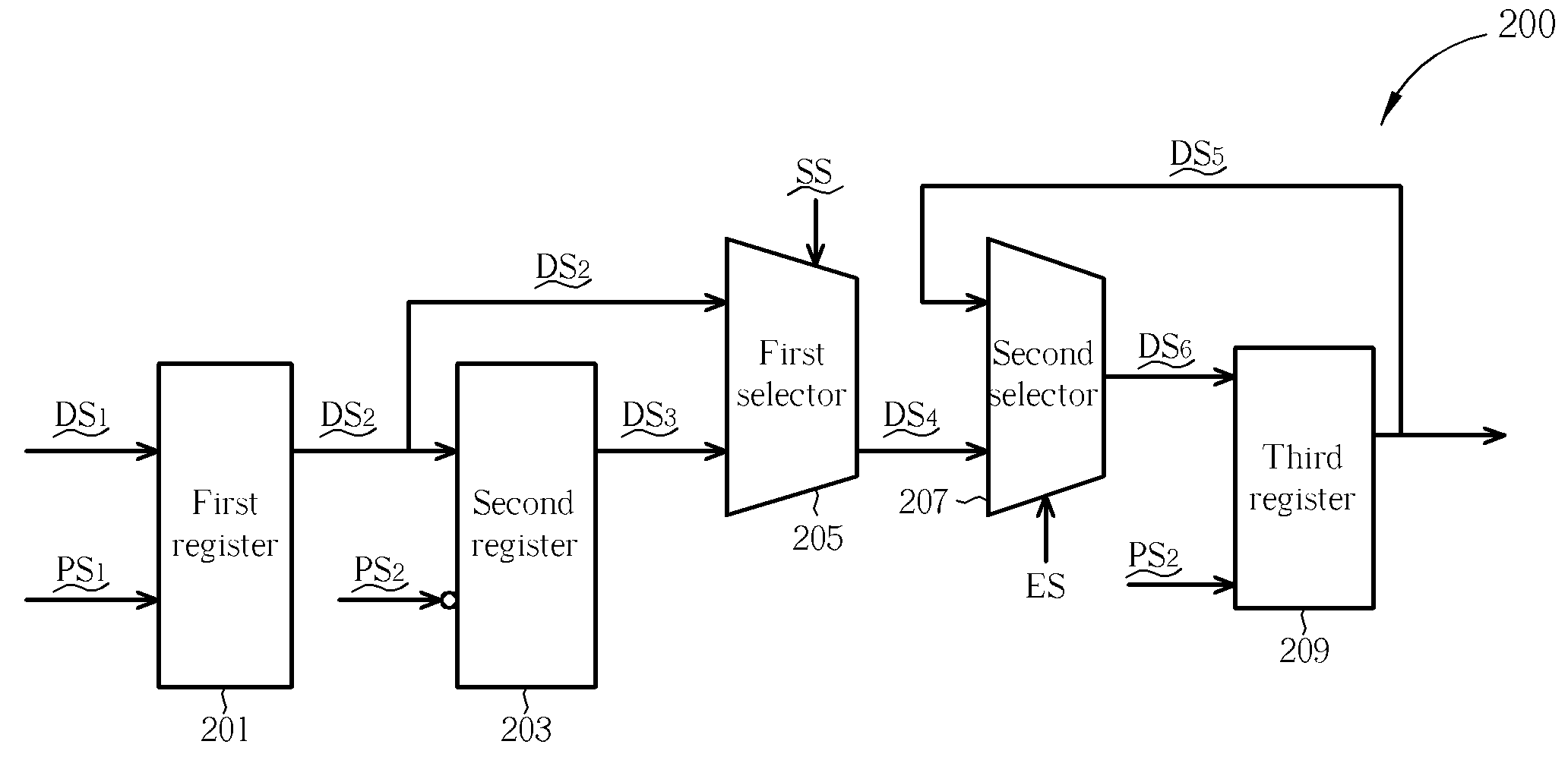Data reading circuit
a data reading and circuit technology, applied in the field of data reading circuits, can solve the problems of data reading clock signal delay, complicated connection lines of electronic devices, and even more serious problems, and achieve the effect of reducing the error of data reading due to signal delay
- Summary
- Abstract
- Description
- Claims
- Application Information
AI Technical Summary
Benefits of technology
Problems solved by technology
Method used
Image
Examples
Embodiment Construction
[0022]FIG. 2 is a diagram of the data reading circuit 200 illustrated according to a preferred embodiment of the present invention. As shown in FIG. 2, the data reading circuit 200 includes a first register 201, a second register 203, a first selector 205, a second selector 207, and a third register 209. The first register 201 is used for receiving a first data signal DS1 and for sampling the first data signal DS1 according to the first edges of a first predetermined signal PS1 to generate a second data signal DS2. The second register 203, which is coupled to the first register 201, is used for sampling the second data signal DS2 according to the second edges of a second predetermined signal PS2 to generate a third data signal DS3. The first selector 205, which is coupled to the second register 203, is used for selecting the second data signal DS2 or the third data signal DS3 as a fourth data signal DS4, which is in accordance with a selecting signal SS, wherein the selecting signal...
PUM
 Login to View More
Login to View More Abstract
Description
Claims
Application Information
 Login to View More
Login to View More - R&D
- Intellectual Property
- Life Sciences
- Materials
- Tech Scout
- Unparalleled Data Quality
- Higher Quality Content
- 60% Fewer Hallucinations
Browse by: Latest US Patents, China's latest patents, Technical Efficacy Thesaurus, Application Domain, Technology Topic, Popular Technical Reports.
© 2025 PatSnap. All rights reserved.Legal|Privacy policy|Modern Slavery Act Transparency Statement|Sitemap|About US| Contact US: help@patsnap.com



